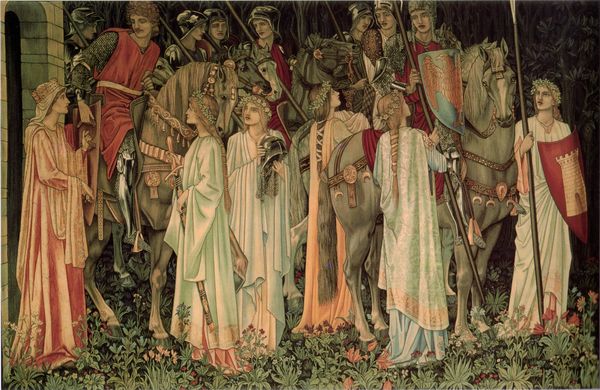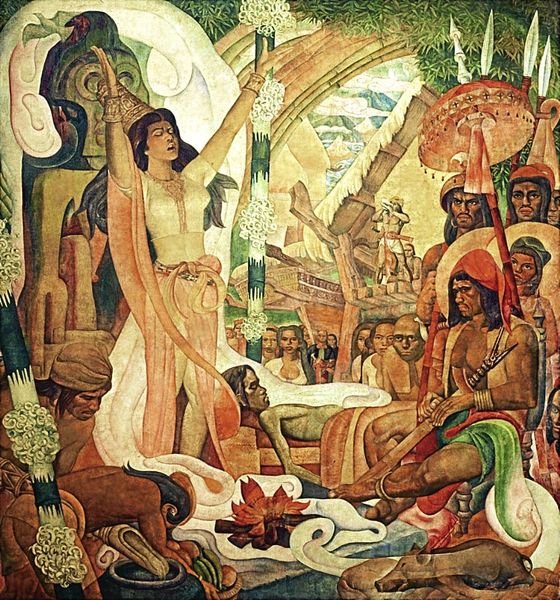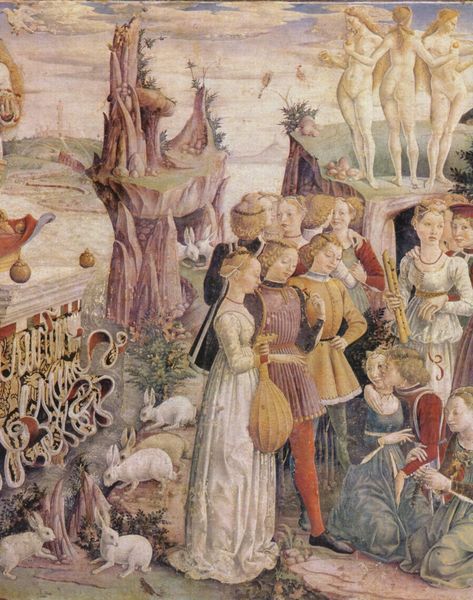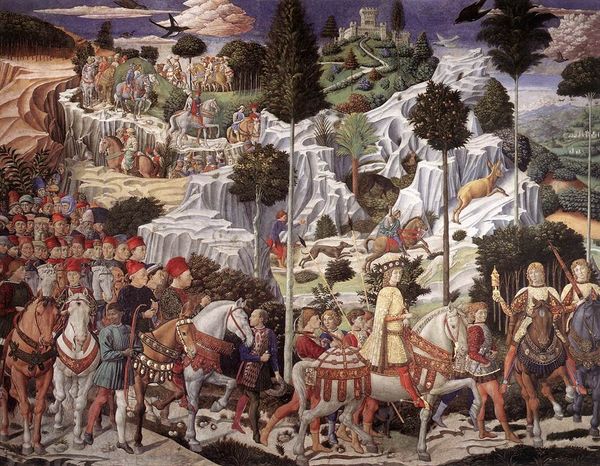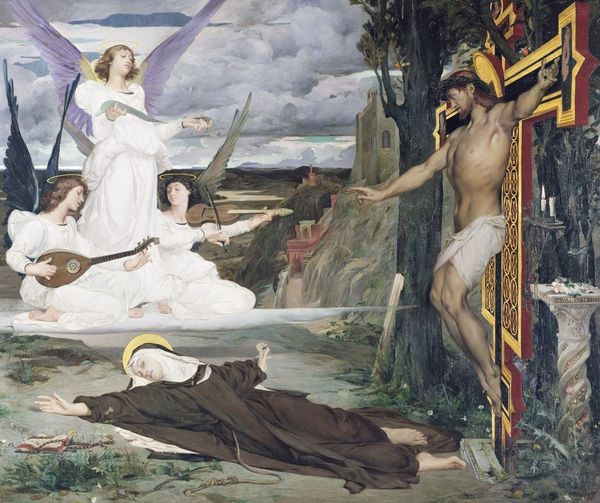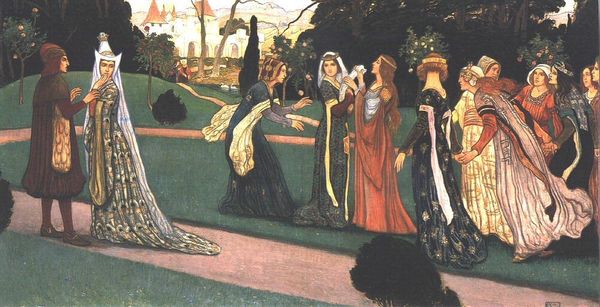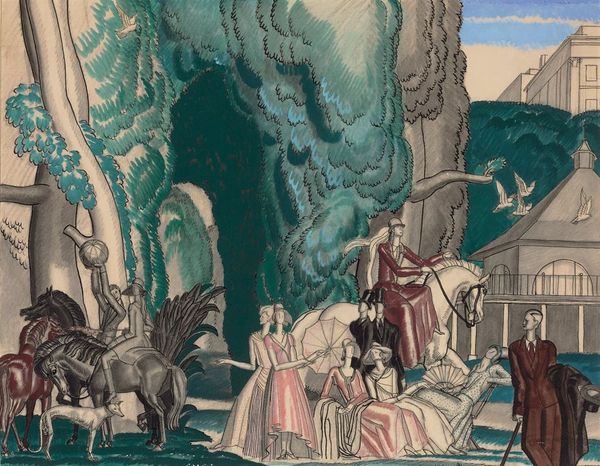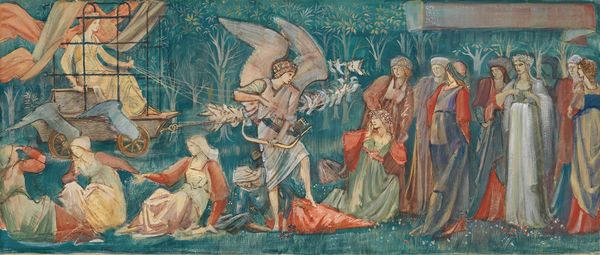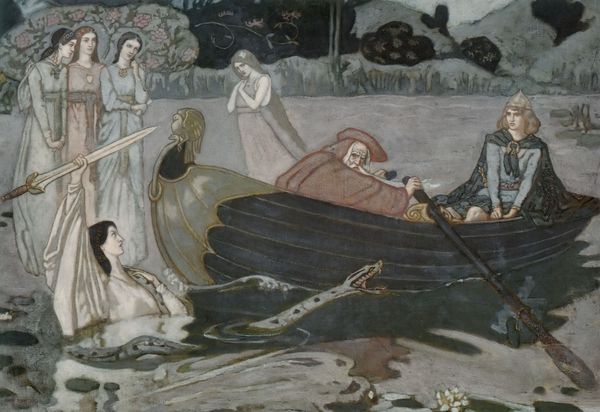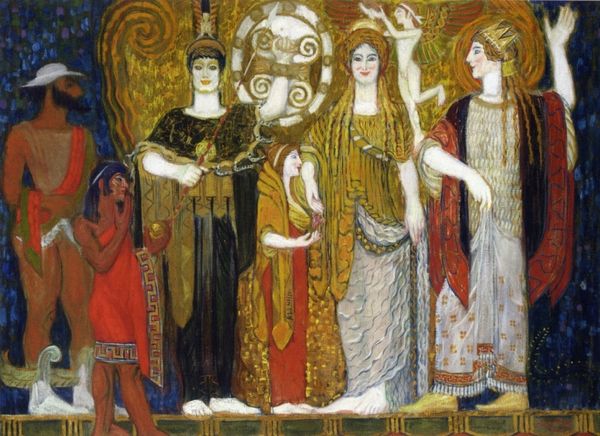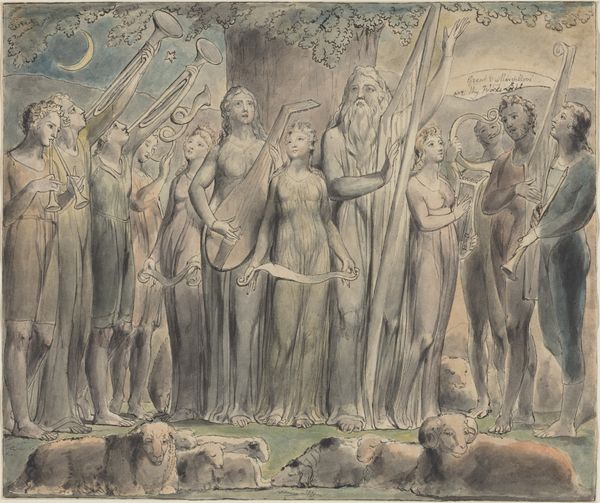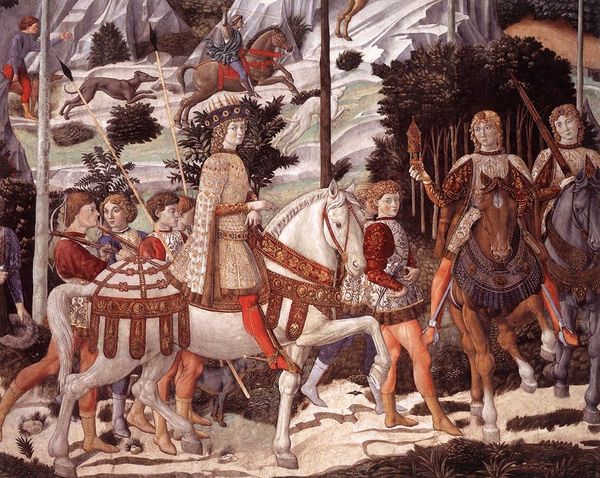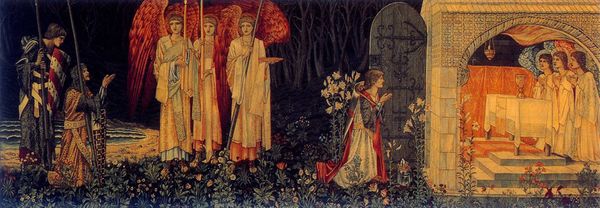
Copyright: Public domain
John Duncan created this painting, A Masque of Love, sometime in the late 19th or early 20th century. It depicts a procession of figures that at first glance seem almost medieval in their dress. Paintings like this were part of a broader cultural phenomenon in Europe and North America at the time. Artists, writers, and other cultural figures became fascinated by the medieval era and incorporated it into their work. Some saw it as a more spiritual, authentic time compared to the modern industrial world. At the same time, there was a strong cultural interest in folklore, myth, and the supernatural. These interests are clear in the mystical symbolism of this painting, in which figures appear to be allegories of love, spirituality, and passion. What makes this more than just escapism is how it subtly critiques modernity by drawing on history and myth to suggest alternative ways of being. To explore this further, we might want to study the writings of Duncan and his contemporaries. What did the medieval period mean to them, and how was it a vehicle for critiquing their own society?
Comments
No comments
Be the first to comment and join the conversation on the ultimate creative platform.
